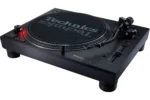The CD resurgence is a fascinating phenomenon that has taken many by surprise in recent years. Once the reigning champion of physical media, Compact Discs saw their glory days fade in the face of digital downloads and streaming services. However, recent trends indicate a revival of CD sales as music enthusiasts turn back to tangible formats for their listening experience. While vinyl records have enjoyed a revival, the CD’s affordability and convenience make it an attractive option for consumers seeking to expand their music collections without breaking the bank. As the landscape of music formats continues to evolve, the CD resurgence serves as a reminder of the enduring appeal of physical media in an increasingly digital world.
The revival of Compact Discs, often referred to as a CD comeback, highlights a shift in consumer preferences towards physical music formats. With the rise of streaming services dominating the market, many might wonder why physical media, particularly CDs, are experiencing a renewed interest. This trend can be attributed to a growing appreciation for the nostalgia and tangible connection that comes with owning a physical copy of music. Additionally, the affordability of CDs compared to other formats, such as vinyl records, makes them an appealing choice for music lovers. As the music industry adapts to these changing dynamics, the re-emergence of CDs underscores the diverse ways fans engage with their favorite artists.
The Origins of the Compact Disc
The compact disc emerged as a revolutionary medium in the late 20th century, marking a significant shift in how we consume music. Introduced by Philips and Sony, the CD was initially met with skepticism, yet it quickly gained traction among audiophiles and casual listeners alike. This new music format offered improved sound quality, durability, and convenience compared to vinyl records and cassette tapes. The introduction of the compact disc in 1982 set the stage for a music revolution, making it the preferred choice for many music lovers.
As the compact disc gained popularity, it swiftly began to dominate the music industry. By the late 1980s, CD sales skyrocketed, overtaking cassettes and vinyl to become the leading physical media format. The era of the CD represented a golden age for the music industry, with artists and labels embracing the new technology. With the ability to store more data than its predecessors, the CD opened up new possibilities for longer albums and enhanced audio quality.
The Dominance of CDs in the Music Market
By the early 1990s, CDs had firmly established their dominance in the music market, boasting an impressive revenue share that surpassed all other formats. The transition from vinyl and cassette tapes to CDs was not merely a trend; it was a significant cultural shift. As music listeners began to prioritize sound quality and convenience, the compact disc became synonymous with the modern music experience. This period saw a massive increase in CD sales, which reached unprecedented heights by 2002.
The robust sales of CDs also led to the emergence of a thriving market for music albums, with artists releasing their works primarily in this format. The compact disc’s capacity to hold multiple tracks made it an attractive option for both consumers and producers. The CD era was characterized by the iconic album artwork and packaging, which became an essential part of the music experience, further solidifying its place in music history.
The Impact of Digital Downloads and Streaming
With the advent of digital downloads and streaming services, the compact disc began to face unprecedented challenges. By 2011, the music industry saw a dramatic decline in CD sales as consumers shifted their preferences towards digital formats. This shift not only changed the way music was consumed but also how it was produced and distributed. The convenience and accessibility of streaming platforms made it easy for listeners to access a vast library of music without the need for physical media.
The rise of digital formats led to a significant reduction in the perceived value of music, as consumers became accustomed to paying less for access to songs. This devaluation of music directly impacted CD sales, which struggled to maintain their market share in the face of growing digital competition. The music industry adapted by focusing more on digital strategies, leading to a decline in the prominence of physical media.
The Resurgence of Physical Media
Despite the overwhelming dominance of digital music formats, recent trends indicate a potential resurgence of physical media, particularly CDs. As music enthusiasts seek tangible connections to their favorite artists, many are rediscovering the joys of collecting CDs. The tactile experience of holding a physical album, along with the accompanying artwork and liner notes, cannot be replicated digitally, leading some consumers to return to the compact disc.
Moreover, the affordability of CDs compared to vinyl records has made them an attractive option for budget-conscious music lovers. As vinyl prices continue to rise due to manufacturing challenges, CDs offer a more cost-effective means of expanding one’s music library. This shift in consumer behavior suggests that the compact disc may be poised for a modest comeback, carving out a niche in a market increasingly dominated by digital formats.
The Changing Landscape of Music Consumption
The landscape of music consumption has evolved dramatically over the past few decades, with each new format bringing its own set of advantages and challenges. From vinyl to cassettes, and now to CDs and digital streaming, consumers have always sought the best experience for enjoying their favorite tunes. The rise of streaming services has certainly changed the way we access music, but it has also led to a resurgence of interest in physical formats, particularly as nostalgia plays a significant role in consumer choices.
As we witness a gradual shift back to physical media, it’s evident that music formats like CDs still hold value for collectors and enthusiasts alike. The unique experience of owning a physical album, along with the nostalgia it brings, has resulted in an uptick in CD sales, highlighting the importance of diverse music formats in today’s market. Understanding the evolving preferences of music listeners will be crucial for artists and labels as they navigate the changing landscape.
Comparing CDs to Other Music Formats
When comparing CDs to other music formats, it is clear that each has its own unique attributes. While vinyl records are celebrated for their warm sound and aesthetic appeal, they also come with drawbacks such as higher prices and fragility. In contrast, compact discs offer a more affordable and durable option, making them accessible to a broader audience. The convenience of CDs, which are easy to store and transport, further enhances their appeal in a fast-paced world.
Additionally, CDs provide a middle ground between the tactile experience of vinyl and the convenience of digital downloads. For many music lovers, the ability to rip CD tracks into high-fidelity digital files allows them to enjoy their favorite albums in both physical and digital formats. This versatility is one of the key reasons why CDs remain relevant in a market that increasingly favors digital consumption.
The Cultural Significance of CDs
The cultural significance of compact discs extends beyond mere music consumption; they represent a pivotal moment in the evolution of how we engage with music. CDs revolutionized the music industry, setting new standards for sound quality and paving the way for the digital age. They allowed artists to reach wider audiences and provided fans with a more immersive listening experience, solidifying the compact disc’s legacy in music history.
As we reflect on the impact of CDs, it is essential to acknowledge their role in shaping music culture. They became symbols of personal identity and expression as fans curated their collections and shared their favorite albums with friends. This sense of community and connection is something that continues to resonate with music lovers today, even as digital formats dominate the landscape.
The Future of CDs in the Digital Era
Looking ahead, the future of compact discs in the digital era remains uncertain. While it’s unlikely that CDs will return to their former glory, their recent resurgence indicates that they still hold a place in the hearts of many music enthusiasts. As more people seek tangible connections to their favorite artists, the compact disc may continue to carve out its niche among collectors and casual listeners alike.
The challenge for the music industry will be to adapt to this evolving landscape while recognizing the enduring appeal of physical media. By fostering a culture that appreciates the unique qualities of CDs, artists and labels can help sustain interest in this format. As trends continue to shift, the compact disc may well remain a beloved choice for those who value the experience of owning music in a physical form.
The Legacy of Compact Discs
The legacy of compact discs is one of innovation and transformation in the music industry. From their introduction in the early 1980s to their peak in the early 2000s, CDs revolutionized how music was produced, sold, and enjoyed. They not only provided a new avenue for artists to share their work but also changed consumer expectations regarding sound quality and convenience.
Even as we navigate the digital landscape, the impact of CDs can still be felt today. They represent a crucial chapter in music history, reminding us of the importance of physical media in an increasingly digital world. As we reflect on their contributions, it is clear that the compact disc will always hold a special place in the hearts of music lovers.
Frequently Asked Questions
What is causing the CD resurgence in recent years?
The CD resurgence can be attributed to a renewed interest in physical media, as sales of CDs have risen while digital downloads have declined. Many consumers appreciate the tangible nature of CDs and their affordability compared to vinyl records.
How do CD sales compare to other music formats currently?
As of 2023, CD sales have experienced a 3.3% increase, making them a competitive option against vinyl records and digital downloads. While vinyl has gained popularity, CDs remain a more affordable choice for acquiring music.
Are CDs better than vinyl records for music listeners?
CDs offer several advantages over vinyl records, including lower prices, ease of conversion to digital files, and durability. This makes CDs an attractive option for music lovers who prefer physical media without the higher costs associated with vinyl.
Is the CD resurgence a temporary trend or a sign of lasting change in music consumption?
While it’s too early to determine if the CD resurgence is a lasting trend, the recent rise in CD sales suggests a shift back towards physical media, indicating that many consumers still value the tangible experience of owning music.
What are the advantages of choosing CDs over digital downloads?
Choosing CDs over digital downloads can be cost-effective, as second-hand CDs are often cheaper. Additionally, CDs can be easily ripped into high-fidelity digital music files, combining the benefits of both physical and digital formats.
What impact did the rise of streaming have on CD sales?
The rise of streaming significantly impacted CD sales, leading to a steep decline after 2011. However, the recent uptick in CD sales suggests that some consumers are returning to physical media as a counterbalance to the dominance of streaming.
Why are CDs considered a viable option for collectors?
CDs are considered a viable option for collectors due to their affordability, ease of storage, and the ability to obtain rare or out-of-print titles, all of which contribute to the growing interest in CD resurgence.
How do current CD sales reflect consumer preferences for physical media?
Current CD sales reflect a growing consumer preference for physical media, as evidenced by the rise in sales over the past year. This trend indicates a desire for tangible music experiences, contrasting with the digital-only landscape.
What does the future hold for CDs in the context of physical media?
The future for CDs may not see them return to their peak popularity, but the current signs of a CD resurgence suggest they will continue to occupy a niche market alongside other physical formats like vinyl records.
Are there specific genres of music that are driving the CD resurgence?
Certain genres, such as classic rock and pop, seem to be driving the CD resurgence, as collectors and fans often prefer physical copies of albums. Artists like Taylor Swift illustrate this trend by releasing albums in both CD and vinyl formats.
| Key Point | Details |
|---|---|
| Introduction of CDs | CDs were first introduced in 1982 by Philips and Sony, initially met with skepticism. |
| Market Peak | CDs dominated the music market, reaching a peak of 95.7% market share by 2002. |
| Decline of CDs | From 2011 onwards, digital downloads and streaming services led to a decline in CD sales. |
| Vinyl Comeback | Vinyl records surpassed CDs in sales in 2019, marking a significant shift in physical media popularity. |
| Recent Trends | In H1 2023, CD sales saw a 3.3% increase, suggesting a potential resurgence. |
| Physical Media Preference | There is a growing preference for physical media, with overall physical sales rising. |
| Affordability | CDs offer a more affordable option compared to vinyl and are easier to convert to digital. |
| Conclusion | While CDs may never return to their former heights, a gradual resurgence seems possible. |
Summary
The CD resurgence is a fascinating trend in the music industry, highlighting a renewed interest in physical media. After years of decline due to the rise of digital downloads and streaming, CDs are experiencing a slight comeback. With the affordability of CDs compared to vinyl and the ease of converting them into digital files, more consumers are turning back to this format. While it’s unlikely that CDs will reclaim their past dominance, their current growth suggests that they still hold value for music lovers.








